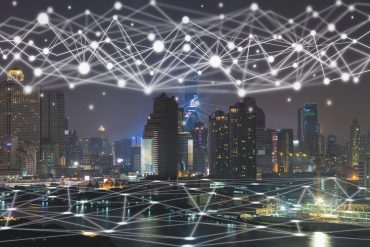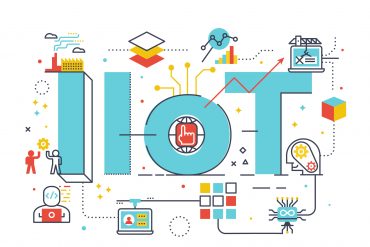
A key enabling technology of the real-time ecosystem, AI promises to bring greater insights — and big change — to supply chain management.
The rapid advance of artificial intelligence is taking the world by storm. While it’s often imagined in social settings that are fun and creative — like modern chatbots or video games — next-gen AI reaches much farther than the latest game console. According to some, it even has the potential to transform the entire supply chain industry within a few years.
Advanced AI didn’t make its way into the supply chain by accident — it’s been spurred on by some significant investments. Investors poured
See also: Is blockchain the future of your supply chain?
Nearly $100 million into areas like eProcurement, blockchain technology, cybersecurity and network logistics in 2017 alone. Other experts predict AI investments related to the supply chain will double within the next five years.
Per a recent Accenture report, 12 fully developed economies can double their economic growth rates by 2035 through the strategic implementation of next-gen AI. The list includes countries like the United States, the United Kingdom, Japan, Germany, Belgium, Sweden and more.
A 2017 report from McKinsey estimates companies like Google, Amazon, and Microsoft invested a combined $20 to $30 billion in AI during 2016 alone. Much of this spending went to IT-related tasks like preventing cybercrime or resolving users’ technical problems. Large portions also went to marketing, finance, and general customer service.
With so much interest in AI-driven supply chain solutions, it’s easy to see how it could spark permanent change in many different industries.
Strengthening the Supply Chain
The concept of AI isn’t exactly new. Its recent appeal comes from the latest advancements in AI technology and, as a result, some monumental breakthroughs that already benefit those who work with the supply chain on a daily basis. A few advantages of this technology include:
Reduced Repetition: While there’s no denying the current supply chain model works, it’s far from efficient. The typical supply chain wastes a lot of time during the different phases of procurement, production and distribution. Manual quality control checks, for example, can easily be relegated to robots and automated systems to save time and money.
Improved Forecasts and Real-Time Decision-Making: Next-gen AI bolsters decision-making based on metrics like historical data, known points of failure and more. IBM’s Watson Supply Chain is a shining example of machine-learning and deep-thinking in action.
Enhancing the Customer Experience: AI isn’t limited to factory robotics. Consumer-oriented devices — including personal assistants like Siri and Alexa, as well as online chatbots — provide new data streams for big data analysts and AI-powered systems alike.
Attracting New Talent: RTInsights recently spoke to Don Jacobson, President of Optimum Supply Chain Recruiters, who told us that AI will be crucial to the future of supply chain recruiting and talent acquisition. “Artificial intelligence tools empower Human Resource Professionals and Hiring Managers by allowing them to match their needs to the ideal candidate. Almost all recruiting technologies using AI will rely on keywords to match both technological skills as well as soft attributes of qualified candidates to prospective employers. With this change there will be a paradigm shift in the way companies will attract talent.
Talent acquisition platforms will be crucial as supply chain jobs will only increase in demand, and with fewer people available to fill them, employers need to make sure their listing is seen by the right person. “This new way of finding talent in a time when unemployment is at an all-time low will cut costs and the time involved to recruit talent by automating the resume screening process.”
While it’s clear that AI will play a more significant role in the future of the modern supply chain, robots aren’t taking over. Human managers are still necessary to supervise automated systems and find new, innovative ways to apply big data to their business.
How to Interject AI Into the Current Supply Chain
Supply chain managers who want to embrace AI and introduce it to their company have their work cut out for them. Apart from convincing their supervisors — which include CEOs, owners, and board members — they also have to maintain access to real-time data, which might not be an option for every business.
In addition to real-time data, companies also must cultivate strong, active communities around their products, services or business. Access to real-time data alone isn’t enough, either. It takes input from multiple sources — including vendors, manufacturers, distributors, and consumers — to realize the full benefit of AI in the modern supply chain.
Enterprises typically use various strategies and tools to build their communities. In some cases, maintaining a profile on social media is all it takes. Others use chatbots of increasing sophistication, online surveys and even contextual advertisements to gain more insight into the community’s interests.
Meanwhile, some companies focus their AI efforts toward day-to-day business operations, including objectives like profitability and sustainability. Siemens operates a “lights-out factory,” which can continue production for weeks without the presence of a human supervisor. While breakthroughs like this might appear to threaten the human workforce, most experts agree that a moderate amount of next-gen automation and AI ultimately benefits everyone.
Next-gen AI isn’t alone in the future supply chain. Instead, many other, equally impressive innovations supplement it — like the Internet of Things (IoT) — and promise to transform the role of the modern supply chain managers even further. This combination of advanced IT, AI-powered robots and the IoT certainly has industry experts looking forward to the next few years.





























